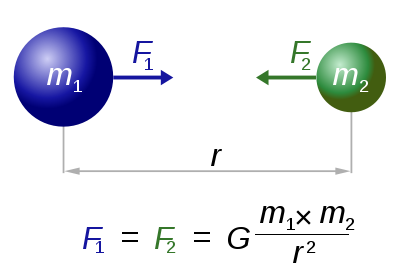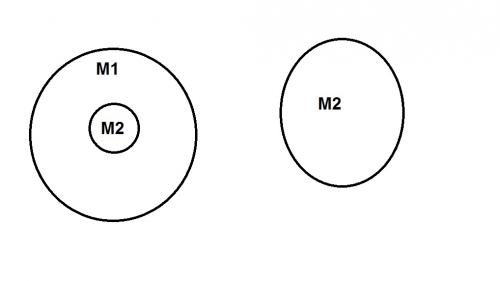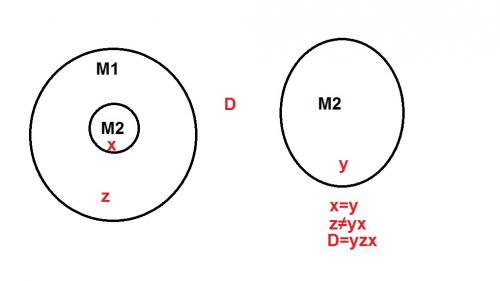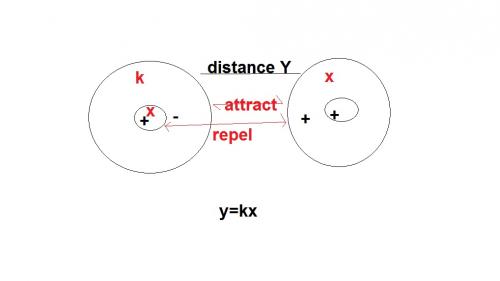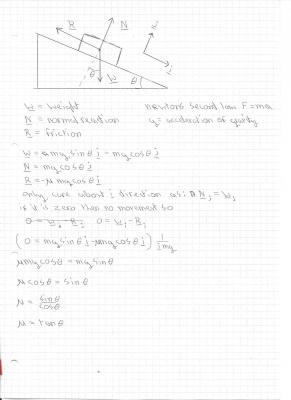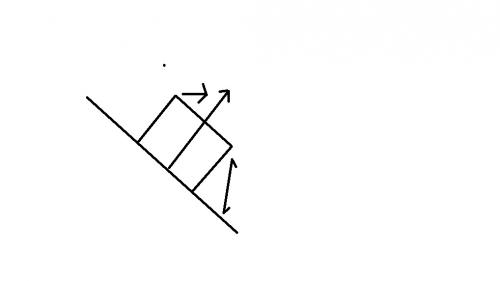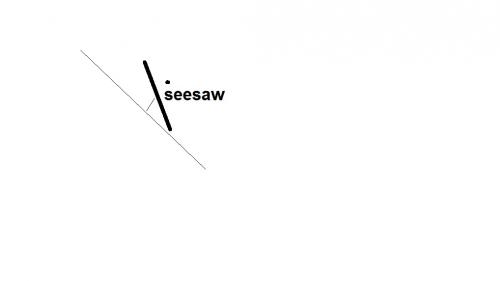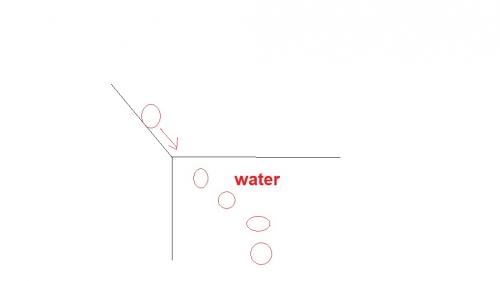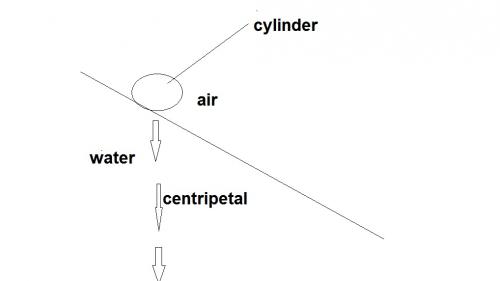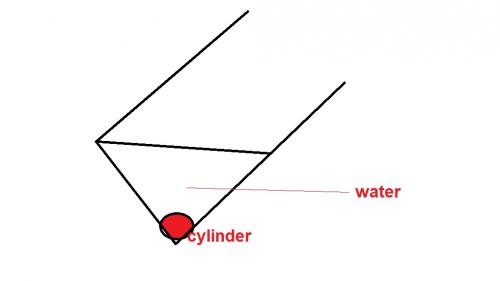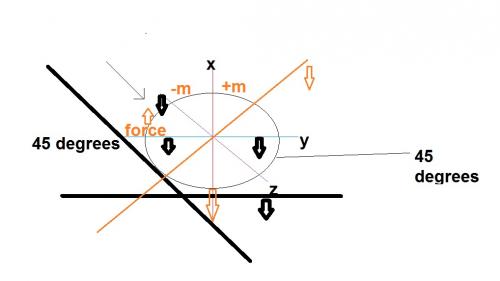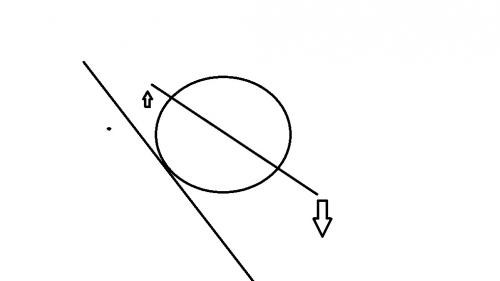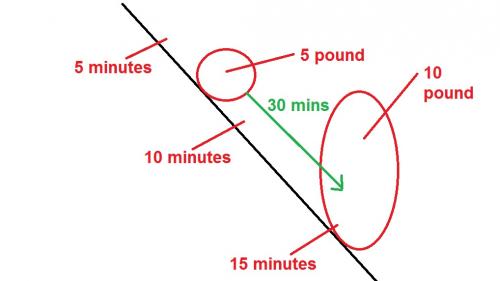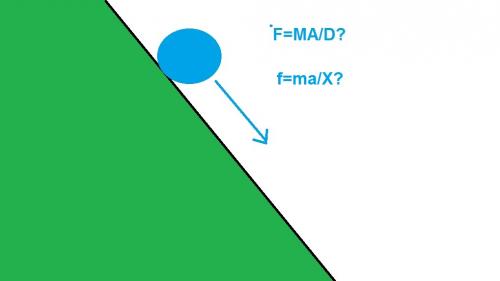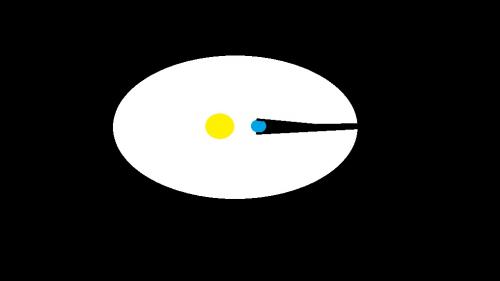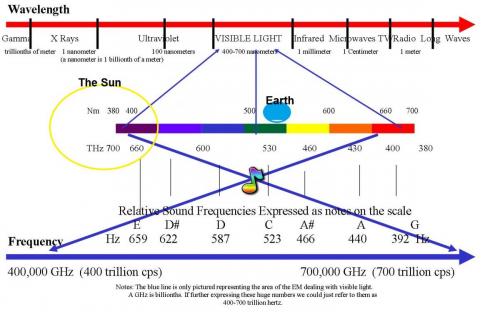

Relative
Senior Members-
Posts
685 -
Joined
-
Last visited
Content Type
Profiles
Forums
Events
Everything posted by Relative
-
In the above model, is there something missing? Ok trying an example new model would this be understandable?
-
Interesting, thank you for the links, are you saying the model there I thought up, is an actual model , or it represents your links? I drew this picture several years ago but without the maths, and when I thought up this picture, it was for perpetual movement in a perfect vacuum, and also an explanation of gravity and planetary orbits. I will read your links properly in the morning , it is late now, thanks.
-
it depends what the force is. A magnet can be static yet still can have force. A new try at an example model . ???
-
To me you are saying that an object is repelled by the surface?
-
''Force can also be described by intuitive concepts such as a push or a pull. A force has both magnitude and direction,'' The force is created by the action of the object impacted the surface, by magnitude and direction, so what magnitude and direction does the surface have then? It is static, but dense. the diagram message
-
My velocity becomes zero because the denser surface absorbs the impact quicker than a bag of feathers. The surface does not have any emitting force. I am unsure in your second part, but I am sure if there was little friction, and an infinite slope, eventually the rolling , sliding object would reach near free fall velocity. Im sorry the writing looked a bit small, and yes I can no see why the arrow pointed the opposite way.
-
Thank you for the diagram why does the radius vector point uphill?
-
In this diagram you just cause mass shift, weight shift. The ground does not push back. Yes I have missed a few stairs in my time, I experience the force of impact, my weight moving at a velocity and impacting with the floor, The shock wave from my weight would send waves into the floor that are absorbed by density , or if the grounds ''viscosity'' is a weak density, the energy is slowly absorbed, until the ground under me becomes more compact , dense. this happens yes?
-
Understood , but the opposite reaction is redirection , and I have labelled the forces sever times, been gravity. There is no other force involved unless you add propulsion. I am scratching my head, I must be thick or something. Ok, I will try be simple, with my questions, what force does the ground apply on the cylinder? Is it not the cylinder applying the force to the ground, the force been surface pressure? A force can have several meanings , But in this context, ''change'' by applying The direction of the cylinder is forced to change by angle of the dense matter, if we removed the hill the cylinder would continue to fall. The cylinder is trying to force its way through the matter, but the matter is dense, and the cylinder does not have impact velocity. So the only possible direction for the cylinder to take, is redirection. The only actual force is gravity, and the object pressing against the surface, trying to go through that surface. Creating surface pressure.
-
Gravity wants to pull the cylinder through the beaker? The beaker is been held by force a hand, stopping both the glass and ball falling? And i still am confused what model we are making?
-
once velocity slows down my cylinder returns to the correct direction? I cant see that has a force, I can only see that has a density difference, if you said that the object exerted pressure on the surface, by the attractive force of gravity, then I could understand that.
-
Re-direction of mass . Why do I contradict, because I look at the articles, and they either jump out and are instantly correct, or the complete opposite. My thoughts on the cylinder was instantaneous. All mass is attracted to a central point, centripetally , by gravity, all objects with no surface contact in our atmosphere fall, just because you put a slope in the way it does not mean that object is not still falling, but been redirected. X axis on my diagram, the entire axis would fall, and if no other elements affected it, it would stay falling linear like an arrow. So this is why I contradict. I like accuracy. My cylinder still wants to fall?
-
X axis will always try to fall. There is no force in a floor, gravity holds me to the floor, the floor is dense? Does a cylinder not fall down a hill and rolling or sliding is just the action?
-
I am even more confused now I have looked at the normal force link you provided. I see nothing but gravity , been the only force. ''In mechanics, the normal force is the component, perpendicular to the surface (surface being a plane) of contact, of the contact force exerted on an object''. The surface does not exert a force on an object, gravity holds the object on the surface? If the surface has a less dense structure, a different ''viscosity'', <muddy water compared to water>, <soil compared to rock>, Then gravity will try to pull you through it. The only force is centripetal to all mass, and by off balance the cylinder roles or slides. I thought my diagram was simple sorry, and shows the same has the normal force diagram link but without the maths?
-
Or you would say friction. Yes I know friction is grip. Density of the surface it is rolling down, the ''viscosity'' of the surface? If it was in soft mud, it would slowly slide down the mountain. and I presume velocity, Like stone skipping on a pond. However is velocity a force? If not , no idea?
-
angle of incline, levitation, leverage. I only can see gravity has the force involved, centripetal, and mass been shifted. Could you enlighten me on the other two acting forces? It would be off balance. ''What single difference is there between a cylinder rolling and a cylinder sliding down a hill? '' Grip...
-
Rolling is an action, not a force, the other force involved would be levitation, weight shifted by greater angle? The South East point having greater mass. Like a glass of water when we tilt it.
-
Gravity, mass, the East of the cylinder will always be pulled down, the west of the cylinder will always be forced upwards/opposite. All actions have an opposite reaction. this vaguely? I know my angles are off. You want me put in x y z vectors etc? Are you trying to explain a fulcrum?
-
-
No it isn't what sorry, what are you referring too? and no such thing as over thinking. I can not talk about anything but models, that is why I stated that is another story. And If you want me to accept something, it needs to be accurate, You have not even told me what senario we are looking for, what model am i trying to create for the cylinder, what findings am I looking for? Time it takes to get down the hill? Average velocity? I can think of several things to calculate about a cylinder rolling down a hill, but they all would be pretty meaningless because of too many variables. I do not understand what you are asking me to work out, what should the model predict?
-
If the hill was ice, then there would be little friction and the cylinder would slide down the hill gaining momentum, I do not understand what is the importance of this, what is the findings we are looking for? There would be too many variables to consider , meaning an inconclusive test. ''You need to tie such ideas in with physical principles. Light gets dimmer as you move away from the source because of the inverse-square law. That's a mathematical model, made from looking at a unit area on a sphere with differing radii.'' And I disagree with this , but that is another story involving isotropic.
-
The Physical picture of the ''black walls of space, this represent that C over distance becomes so red shifted, that we simply can not see, and my model was trying to show that the visual volume of space is directly proportional to the Suns energy and size etc. A bit like putting a 40 w light bulb in the center of a football pitch with no other light. That would be un-proportional. And what do you mean by incorporate a path ? I though the path was down hill? And what friction? I thought friction was associated with heat, would heat not be lost has quick has gained by the rotation? arrr, i got yea now, i did account for friction when i asked if the surface had grass etc.
-
Thank you for the advice,please do not close the thread, it is in homework section, my home work is to learn science and eventually to create a model that is understood. I am now confused, because in one posters advice he mentions , make a complete new model, or make some complete new maths, I thought that is what I was doing. ''Sometimes you need to create your own correlation, because no formula exists yet. Then, if you are lucky, you know all the variables, and can calculate your answer now. '' Ok I will start with a cylinder rolling down a hill, You mean like this? D been distance X been incline How longs the grass? is there any bumps in the hill? Is the hill dry or wet? What material is the cylinder made of? How high is the hill, because at altitude there would be less gravity making the ma slower? Weather conditions? how big of a circumference has my cylinder got? And what would be the purpose of the model, what are we trying to show? And my new model was meant to represent this This
-
I do not think I understand modelling, I will look at your block sliding. I thought EMR was a product of the Sun? And the visual universe directly proportional to the Sun. Light making the visual . Is the light not directly proportional to the Suns energy output? And if space and darkness is not zero what is it? Please explain where my model is flawed, this will help me learn modelling. Y is light, X is the Sun/energy/light, k is darkness and the volume of space we can see. Y is visual universe maybe , unsure. oh sorry and h is plank constant. My homework is to make a new model.

